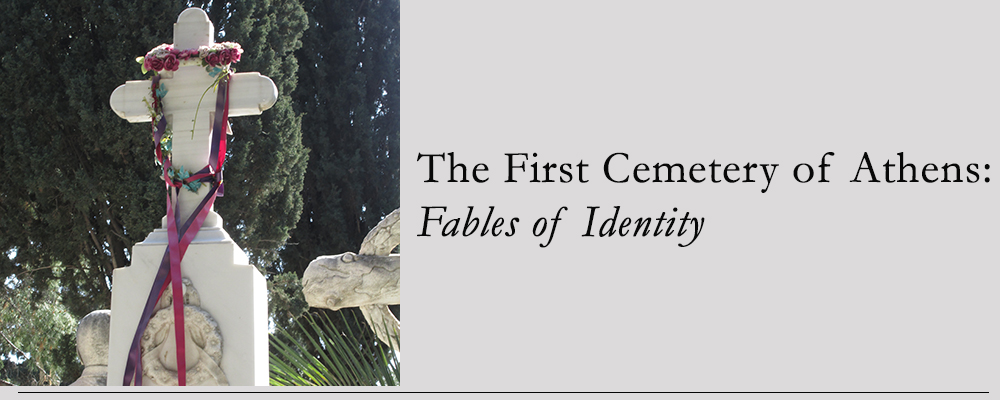Michael Tombros (Μιχάλης Τόμπρος)
Born in 1889 Died in 1974
Like most Greek sculptors, Michael Tombros grew up in his father’s
studio. He was daring, hardworking, inventive, and had a memorable piercing
gaze. Both determined and confident, he carved out a new path in the Greek and international art world. He acquired international fame as a sculptor and was the
first to publish an illustrated art magazine in Greece. As a teacher he was
excellent. His students would declare
that he never merely offered recipes or dogmatic principles, but that he opened
new doors of freedom for them
His Life
At 14, Tombros
enrolled in the School of Arts in Athens,
and studied under the famous sculptor Giorgos
Vroutos (1843-1909). Under his
tutelage Michael learned the harmony of the proportions of the body and to look
at marble ‘with the eyes of an artist’.
Tombros took the
all important sketching lessons from the most famous artists of his time: Geraniotis,
Kalloudis and Iakovidis. His fellow
students were Giorgos Bouzianis, Demetris Galanis and Aggelos Theodoropoulos,
three men who would change the face of Greek modern art.
In 1909 he served his obligatory army service. By 1912,
then in his early twenties, he opened his own workshop. Two years later he won
a scholarship from the Averoff Institute and, just as the First World War was
erupting in Europe, left for Paris to study at the Academie Juliane under L. H. Bouchard and P. M. Landowski. Soon after would be called back to Greece to
serve in the army. He would say of this period: “From the Academie Juliane I found
myself in a stable full of mules and instead of a sculptor’s chisel, I was wielding
a shovel!” (1)
In 1919 Eleftherios
Venizelos commissioned him to copy the sculpture the Nike of Paionios as a
gift to Louie-France
D’ Esperey, the
French Commander of the Allied Forces.
A gypsum model, one third of the size of the original Nike, is in the
Museum of Olympia.
The same
year, he was given a position teaching sculpture at the School of Fine Arts of
Athens but resigned in 1923 because he disagreed with the plan to establish a
‘War Museum’. He left for Paris where he
stayed for three years, - years that would determined much of his aesthetic for
the rest of his of his life. In Paris he met famous artists like George Braque and Picasso, and experimented with abstract art, cubism, and even
surrealism.
The Dancer 1927
Mask 1928
www.academia.edu
His famous ‘Two Friends’ 1929
Critics started noticing his work and wrote about his
art, comparing him to the sculptor A. Maillol (1861-1944).
Back in
Greece in 1928, he began a magazine called the “20th Century”.
It was
the first pictorial art magazine in Greece covering international subjects and
including criticism and commentary by artists and intellectuals such as Le Corbusier, Fernand Léger, Christian Zervos, Nikos
Hadjikyriakos-Ghikas
and Zacharias
Papantoniou.
www.enandr.gr
In 1938, during the Metaxas regime (3), he was again given the position of professor
in the Greek School of Fine Arts. His own experiences and his grasp of
aesthetics made him an excellent teacher. His students remarked that he taught
them ‘sensitivity and ethos’.
In 1949,
Tombros, by now very famous, created an emblem for the city of Athens that is
still used today:
Sculptures by
Michael Tombros have been exhibited in major solo and group exhibitions
including the Salon des Artistes Francais, Salon des Tuileries and Salon des Independants in
Paris,the 1937 Exposition
Internationale des Arts et Techniques dans la Vie Moderne in
Paris, the Venice Biennale (1934, 1938 and 1956), and
the São Paulo Art Biennial (1955). He
was awarded the GRAND PRIX in 1925 and 1937, and in 1971 the Gold Medal at the
Florence Biennale. In 1967 the Academy of Athens awarded with Excellence in Beaux
Arts.
The Exotic, a mature work from 1955 in National Gallery
of Athens
Michael Tombros in the First Cemetery
Perhaps because his works in the First Cemetery were
commissioned, Tombros displays his more traditional side in the memorials he
created.
Plaza, Number
67 (1938)
A Bas Relief of the Nikolopoulos brothers. Left to right: Demetrios,
Ioannis,and Spiros. The three brothers died the in same year.
Plaza, Number
9 (1935)
Plaza Number 8,
(1938)
The Anastasiadis Family Tomb
Section 4,
Number 390 (1917)
Family Tomb of Ioannis Voukras. (A favorite!)
Our Athenian owl looks a little disconcerted by the Christian ‘memento
mori’ under its talons!
Section 4, Number 459
The corner grave of R. Daglish
In 1971, for his own Family tomb, he reproduced a work
which he had created in 1929. He allowed himself far more artistic latitude with
this wonderful figure of a mourning woman.
She is almost immediately beside the tomb of Theodoros Kolokotronis.
The bronze
plaques of his parents in the background are by Tombros himself.
Sources
http://thesis.ekt.gr/thesisBookReader/id/7909#page/1/mode/2up
Δημήτρης Παυλόπουλος
Footnote
(1) Φώτος
Γιοφύλλης του Δημήτρη Παυλόπουλου http://thesis.ekt.gr/thesisBookReader/id/7909#page/1/mode/2up
(2) http://www.enandro.gr/politismos/1278-20.html «δεν
μπορούμε κάθε τι νατουραλιστικό με γνώμονα τον αρχαϊσμό μας να το βαπτίζουμε
μεγάλη τέχνη. Αυτό θα φανέρωνε μόνο τον τοπικισμό και την άγνοια μας.» Δανάη Μπασαντή
(3) Tombros, like many
Greeks of his era, had no difficulty accepting a teaching position during the
Metaxas dictatorship. In 1941, he created a famous bust of Metaxas, which is
currently in the War Museum. Then again, he created many such busts of famous
Athenians, even one of Sophia Schliemann.



















Δεν υπάρχουν σχόλια:
Δημοσίευση σχολίου